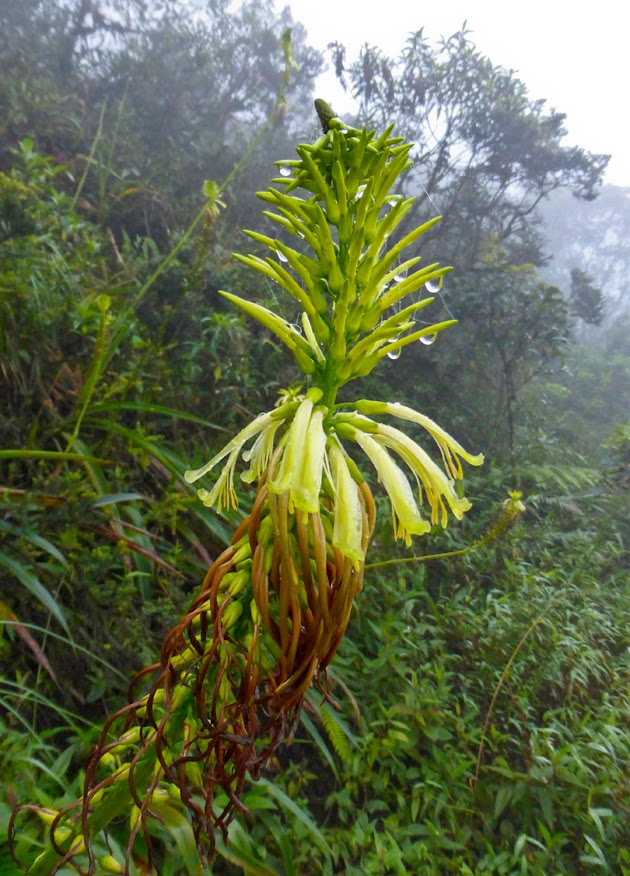The cloud forest habitat holds exquisite and fascinating plants as well. Tapichalaca Reserve abuts Podocarpus National Park, adding its 20 square miles to that park's 565 square miles. I haven't been able to identify these plants, but want to show you how beautiful they are...
...the fungi, too! (Photos by Narca)
Lichens and mosses cloak the trees
Plants in the heather family (Ericaceae) are well represented in the higher Andes, as they are in regions much farther north, like Alaska and Scotland. Think blueberries!
A heather of some sort
Check out the spotted lip on this fuzzy red bell!
This lovely plant glows in the mist; I didn't alter the color saturation at all.
Perhaps my favorite flower here: can anyone ID it?
Much of our birding is done in the rain and fog (more so than at any other location we visit on this trip to Ecuador), and taking good photos is challenging in these wet, low-light conditions.
A typical misty day in Tapichalaca
Nonetheless, we find some very fine birds! White-breasted Parakeet is another rare, range-restricted species, only known from three locations in southern Ecuador and one in adjacent northern Peru. It is a threatened species, and the Jocotoco Foundation has put up nest boxes for it too, but at a lower elevation than the nest boxes for the Golden-plumed Parakeets. White-breasted Parakeets inhabit forest in the upper tropical zone, a region that is rapidly being deforested.
A White-breasted Parakeet, through the fog
We are fortunate to see a White-bellied Antpitta, which is shy like most other antpittas. One is calling on the forested slope below us. When our guide Diego responds with a whistled imitation, the bird zooms in, but still is hard to spot in the thick undergrowth, and through the mist. White-bellied Antpittas inhabit humid montane forest, and are able to survive in degraded habitat better than most other antpittas.
White-bellied Antpitta
Back in the vicinity of the lodge, several non-hummingbirds flock to the feeders.
Masked Flowerpiercer
Rufous-naped Brush-Finches
A handsome Black-capped Hemispingus


















No comments:
Post a Comment